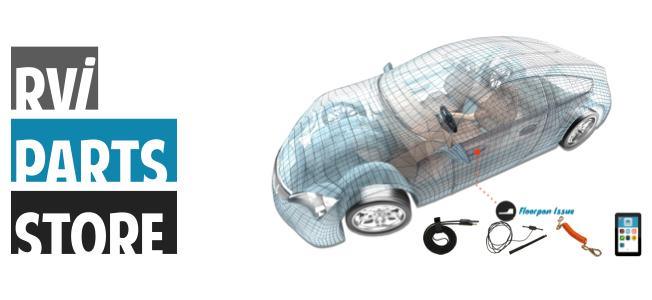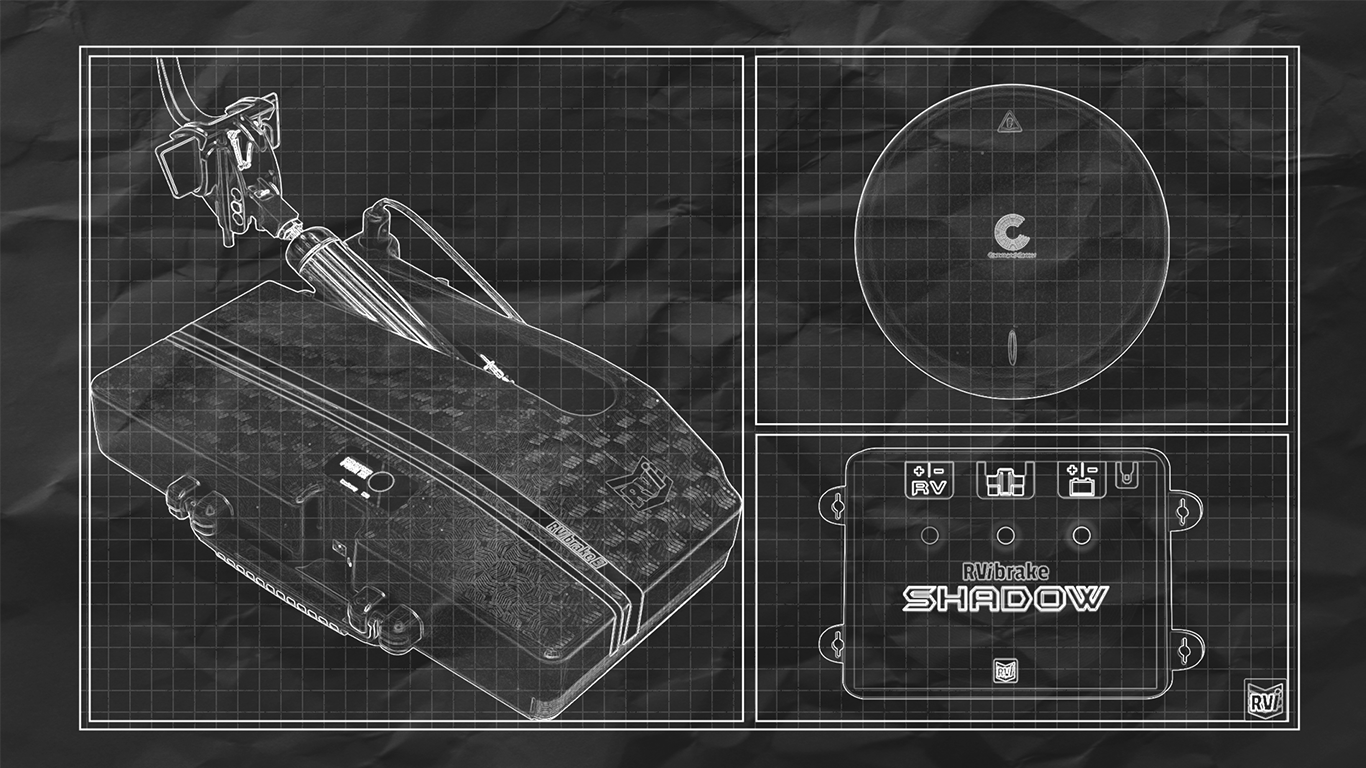If you’re new to the world of RVing, you may hear the terms “supplemental brake system” and “auxiliary brake system” used from time to time. Both are just a fancy way of referring to the various flat towing braking systems that are required by law in 49 of 50 states and all of Canada. But how do these braking systems function? And what benefits do they provide outside of just making you ‘legal’? We’ll take an in-depth look in this article.
WHAT KINDS OF SUPPLEMENTAL BRAKE SYSTEMS EXIST?
Before we can understand how these braking systems work, we have to understand the different types that exist. There are two categories of flat towing braking systems on the market today: Installed and portable.
Portable systems typically consist of a box with some kind of arm or piston attached. This unit sits on the floorboard of the driver’s seat and pushes on the brake pedal during a braking.
Installed systems are fully integrated under the hood of the towed vehicle, and usually consist of some kind of cable that is routed through the firewall of the car. In a braking, this cable pulls on the brake pedal.
WHY ARE SUPPLEMENTAL BRAKE SYSTEMS IMPORTANT?
While braking systems are required by law, they’re also a critical piece of safety equipment when you’re traveling down the road.
The average weight of a mid-sized towed vehicle ranges anywhere from 3,000-6,000 lbs. When you’re in a panic stop, the entire weight of that towed vehicle is pushing on the back of your RV, vastly increasing the stopping distance required. Additionally, this also creates the risk of drive-under, where the vehicle buckles the tow bar and lifts the rear end of the RV off the ground.
Both of these create the potential for very dangerous situations, not just in terms of damage to your vehicle(s), but also in terms of your life and the lives of other drivers around you. This is why supplemental brake systems are so important: They eliminate the risk of drive-under and keep your towed vehicle from pushing you forward into traffic.
HOW DO SUPPLEMENTAL BRAKE SYSTEMS WORK?
This is where the kind of braking system you own matters. While both installed and portable systems accomplish the same task during a braking, they do so in very different ways.
With a portable system, you typically have either an electric motor or a compressor and air tank. These components are what actuate the arm of the brake. Most are powered by a standard 12v outlet, allowing you to plug the unit in somewhere on your dash. When a braking occurs, it triggers the unit to push down on the pedal. This trigger can come in the form of something mechanical (such as some kind of pendulum switch or input from the RV brake pedal) or something electronic (such as an accelerometer chip). In either case, the brake activates for as long as it continues to sense braking, then returns to a ‘resting mode' when the braking is over.
Installed braking systems get a little more complicated. Because these units fully integrate into the towed vehicle and motorhome, you’ll rarely interact with them after they’re installed. However, the actual installation process can be quite a headache (it usually takes a seasoned tech about 6-8 hours to install one system). That’s because these braking systems get their actuation power/force by splicing into the vacuum line of your towed vehicle - the same vacuum line that provides you with assist on your pedal when you’re driving the vehicle around. During a braking, the system will use this vacuum to actuate some kind of cylinder assembly, which pulls on a cable that’s attached to your brake pedal. Many of these systems use the motorhome’s brake pedal or brake lights as their trigger for when to actuate (though a small number use something like a pendulum or accelerometer).
If you want a more technical deep dive on how they work:
HOW DO I KNOW WHAT SYSTEM IS BEST FOR ME?
Our president Dan did a great video walking through the pros and cons of using a portable vs. an installed braking system. You can find that here:
At the end of the day though, there are a few things you want to look out for no matter which type of system you choose:
- Rapid response time - Because supplemental brake systems are most important during panic stops (which typically only last 1-2 seconds), you need a brake that can fully depress your pedal in under half a second. This criteria rules out any brakes that use an electric motor to actuate, as electric motors can take a full 2-3 seconds to extend/pull.
- Truly proportional braking - Non-proportional braking can cause serious wear and tear on your vehicle’s brakes, as well as diminish the life of the actual braking system. Unfortunately, most of the triggers used by supplemental brake systems are not truly proportional. If your brake uses something like a pendulum switch, your system will be unduly affected by things like gravity and inclines. If your brake uses the RV brake lights or brake pedal, then it’s going to activate far too often and in situations where supplemental braking is not needed. The only truly proportional brakes on the market use an accelerometer, which is an electronic chip that measures things like inertia, resting angle, etc. to accurately brake in any situation.
- Ease of use/installation - If you’re going portable, that means finding a system that isn’t super heavy or clunky. You also want to avoid using a system that pushes against the driver’s seat, as this can cause damage to your seat over time. If you decide to go with an installed system, you want to find one that can be installed quickly without a lot of unnecessary crimping and cutting.
Fortunately, here at RVi, we make both a portable and an installed system that meet all of the above criteria - and more! Our portable braking system, RVibrake3 has been the industry's gold standard since its release in 2016. It provides accurate, proportional braking thanks to its onboard accelerometer, and its air-driven actuation system ensures a speedy response during even the harshest of panic stops.
CONCLUSION
At the end of the day, a supplemental brake system is a critical part of your flat tow setup, and understanding what to look for when purchasing one will help to keep you safe and eliminate headaches when you’re on the road. If you need any guidance on what’s right for your specific situation, we’re here to help! Reach out via phone, chat, or email. And, in the meantime, happy RVing!










Leave a comment